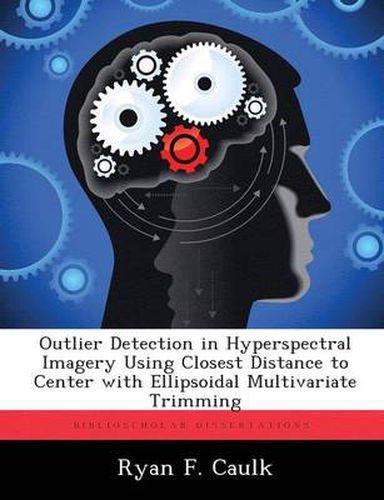Readings Newsletter
Become a Readings Member to make your shopping experience even easier.
Sign in or sign up for free!
You’re not far away from qualifying for FREE standard shipping within Australia
You’ve qualified for FREE standard shipping within Australia
The cart is loading…






This title is printed to order. This book may have been self-published. If so, we cannot guarantee the quality of the content. In the main most books will have gone through the editing process however some may not. We therefore suggest that you be aware of this before ordering this book. If in doubt check either the author or publisher’s details as we are unable to accept any returns unless they are faulty. Please contact us if you have any questions.
Many multivariate techniques are available to find outliers in a hyperspectral image. Among the algorithms one may utilize is a global anomaly detector called Ellipsoidal Multivariate Trimming (MVT). In this paper we tested the efficacy of using the Closest Distance to Center (CDC) algorithm in conjunction with MVT to find outliers among a hyperspectral image. Since MVT is a global anomaly detector the images were first clustered using a variety of techniques. Among the hyperspectral images used for evaluation in this study, only one of the images contained more than 5% outliers in any given cluster set. Based upon the assumption that this is normally the case for most images, the standard use of 50% retention within MVT does not perform as well as using a higher value such as 95% for retention in MVT. This use of a higher number of observations for the estimate of the mean and covariance is shown to decrease the effect of swamping seen when using 50% retention. Furthermore, the use of CDC to initialize the MVT iteration process did not have any effect on outlier determination, but did increase the time to compute significantly.
$9.00 standard shipping within Australia
FREE standard shipping within Australia for orders over $100.00
Express & International shipping calculated at checkout
This title is printed to order. This book may have been self-published. If so, we cannot guarantee the quality of the content. In the main most books will have gone through the editing process however some may not. We therefore suggest that you be aware of this before ordering this book. If in doubt check either the author or publisher’s details as we are unable to accept any returns unless they are faulty. Please contact us if you have any questions.
Many multivariate techniques are available to find outliers in a hyperspectral image. Among the algorithms one may utilize is a global anomaly detector called Ellipsoidal Multivariate Trimming (MVT). In this paper we tested the efficacy of using the Closest Distance to Center (CDC) algorithm in conjunction with MVT to find outliers among a hyperspectral image. Since MVT is a global anomaly detector the images were first clustered using a variety of techniques. Among the hyperspectral images used for evaluation in this study, only one of the images contained more than 5% outliers in any given cluster set. Based upon the assumption that this is normally the case for most images, the standard use of 50% retention within MVT does not perform as well as using a higher value such as 95% for retention in MVT. This use of a higher number of observations for the estimate of the mean and covariance is shown to decrease the effect of swamping seen when using 50% retention. Furthermore, the use of CDC to initialize the MVT iteration process did not have any effect on outlier determination, but did increase the time to compute significantly.